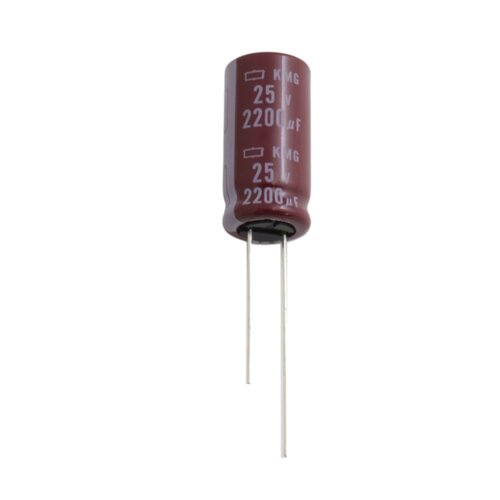105℃ Radial Lead Type Aluminum Electrolytic Capacitors KMG Series EKMG350ELL222ML25S
- Solvent Resistance
- RoHS
- Standard
- Control Circuit etc
This product is discontinued. Please consider switching to a different product.
| Part Number | EKMG350ELL222ML25S |
|---|---|
Status
|
DiscontinuedSearch for alternatives |
| Successor Model | KMQ/KXJ series |
| Series | KMG |
| Polarity | Polar |
| Category Temperature Range | -55~105 ℃ |
| Rated Voltage | 35 Vdc |
| Capacitance | 2200 µF |
| Capacitance Tolerance | -20~20%(M) / 20℃, 120Hz |
| Dimensions ⌀ D | 16mm |
| Dimensions L | 25mm |
| Rated Ripple Current | 1260mArms / 105℃ / 120Hz |
| Leakage Current | 2310 μA max / 20℃, after 1 minute |
| Dissipation Factor (tanδ) | 0.16 max / 20℃, 120Hz |
| Endurance Temperature/Time/Overload | 105℃ / 1000hrs / DC+Ripple |
| Shelf Life Temperature/Time | 105℃ / 1000hrs |
| Terminal Coating | Sn |
Reference Weight
|
8.6g |
Minimum Order Quantity
|
500 pcs |
RoHS Compliant
|
Compliant |
Rated Ripple Current Multipliers
Zoom
| Frequency [Hz] | 50 | 120 | 300 | 1k | 10k | 100k |
|---|---|---|---|---|---|---|
| Multipliers | 0.85 | 1.00 | 1.03 | 1.05 | 1.08 | 1.08 |
Dimension [mm]
Part Numbering System
Stock at Distributors
| Distributors | Stock quantity | Buy |
|---|---|---|
Loading...  | ||
Powered by netCOMPONENTS

